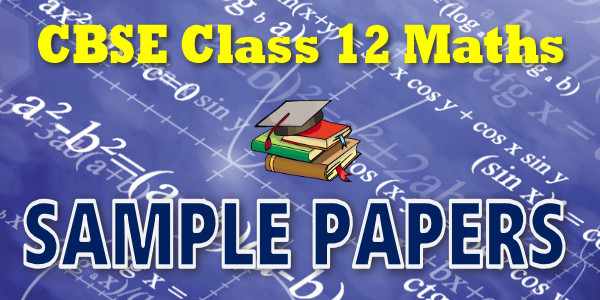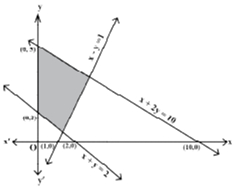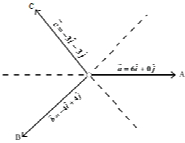
myCBSEguide App
Download the app to get CBSE Sample Papers 2023-24, NCERT Solutions (Revised), Most Important Questions, Previous Year Question Bank, Mock Tests, and Detailed Notes.
Install NowWe have CBSE Class 12 Maths sample papers for 2023-24 on the myCBSEguide app. Students can download them as PDF with 100% genuine solutions. If you are searching for the best CBSE Sample Papers Class 12 Mathematics 2024, you must visit our student dashboard. It has a one-stop solution for all your study-related needs.
Sample Papers of Maths Class 12 – Free PDF Download
CBSE Sample Papers Class 12 Mathematics 2024 The new marking scheme and blueprint for class 12 have been released by CBSE. We are providing Mathematics sample papers for class 12 CBSE board exams. Sample Papers are available for free download in the myCBSEguide app and website in PDF format. CBSE Sample Papers Class 12 Mathematics With Solutions of 10+2 Mathematics are made available by CBSE board exams are over. CBSE marking scheme and blueprint are provided along with the Sample Papers. This helps students find answers to the most frequently asked question, How to prepare for CBSE board exams. CBSE Sample Papers of Class 12 Mathematics for 2024 Download the app today to get the latest and up-to-date study material. CBSE sample paper for class 12 Mathematics with questions and answers (solution).

Sample Papers of Class 12 Maths 2024 with solution
CBSE Sample Papers Class 12 Mathematics 2024
CBSE Class 12
Mathematics (Code No. 041)
(Sample Paper 2023-24)
Time Allowed: 3 Hours
Maximum Marks: 80
General Instructions:
- This Question paper contains – five sections A, B, C, D and E. Each section is compulsory. However, there are internal choices in some questions.
- Section A has 18 MCQ’s and 02 Assertion-Reason based questions of 1 mark each.
- Section B has 5 Very Short Answer (VSA)-type questions of 2 marks each.
- Section C has 6 Short Answer (SA)-type questions of 3 marks each.
- Section D has 4 Long Answer (LA)-type questions of 5 marks each.
- Section E has 3 source based/case based/passage based/integrated units of assessment of 4 marks each with sub parts.
Class 12 Maths Sample Paper SECTION – A
(Multiple Choice Questions)
Each question carries 1 mark
- If A = [aij] is a square matrix of order 2 such that aij = {tex}\left\{\begin{array}{l} 1, \text { when } i \neq j \\ 0, \text { when } i=j \end{array}\right.{/tex}, then A2 is
- {tex}\left[\begin{array}{ll} 1 & 0 \\ 1 & 0 \end{array}\right]{/tex}
- {tex}\left[\begin{array}{ll} 1 & 1 \\ 0 & 0 \end{array}\right]{/tex}
- {tex}\left[\begin{array}{ll} 1 & 1 \\ 1 & 0 \end{array}\right]{/tex}
- {tex}\left[\begin{array}{ll} 1 & 0 \\ 0 & 1 \end{array}\right]{/tex}
- If A and B are invertible square matrices of the same order, then which of the following is not correct?
- adj A = |A|{tex}\cdot{/tex}A-1
- det(A)-1 = [det(A)]-1
- (AB)-1 = B-1A-1
- (A + B)-1 = B-1 + A-1
- If the area of the triangle with vertices (-3, 0), (3, 0) and (0, k) is 9 sq units, then the value/s of k will be
- 9
- {tex}\pm{/tex}3
- -9
- 6
- If f(x) = {tex}\begin{cases}\frac{k x}{|x|}, & \text { if } x<0 \\ 3, & \text { if } x \geq 0\end{cases}{/tex} is continuous at x = 0, then the value of k is
- -3
- 0
- 3
- any real number
- The lines {tex}\vec{r}=\hat{i}+\hat{j}-\hat{k}+\lambda(2 \hat{i}+3 \hat{j}-6 \hat{k}){/tex} and {tex}\vec{r}=2 \hat{i}-\hat{j}-\hat{k}+\mu(6 \hat{i}+9 \hat{j}-18 \hat{k}){/tex}; (where {tex}\lambda{/tex} & {tex}\mu{/tex} are scalars) are
- coincident
- skew
- intersecting
- parallel
- The degree of the differential equation {tex}\left[1+\left(\frac{d y}{d x}\right)^2\right]^{\frac{3}{2}}=\frac{d^2 y}{d x^2}{/tex} is
- 4
- {tex}\frac{3}{2}{/tex}
- 2
- Not defined
- The corner points of the bounded feasible region determined by a system of linear constraints are (0, 3), (1, 1) and (3, 0). Let Z = px + qy, where p, q > 0. The condition on p and q so that the minimum of Z occurs at (3,0) and (1,1) is
- p = 2q
- p = {tex}\frac{q}{2}{/tex}
- p = 3q
- p = q
- ABCD is a rhombus whose diagonals intersect at E. Then {tex}\vec{E A}+\vec{E B}+\vec{E C}+\vec{E D}{/tex} equals to
- {tex}\vec 0{/tex}
- {tex}\vec {AD}{/tex}
- {tex}\vec{2BD}{/tex}
- {tex}\vec{2AD}{/tex}
- For any integer n, the value of {tex}\int_0^\pi e^{\sin ^2 x} \cos ^3(2 n+1) x d x{/tex} is
- -1
- 0
- 1
- 2
- The value of A, if A = {tex}\left[\begin{array}{ccc} 0 & 2 x-1 & \sqrt{x} \\ 1-2 x & 0 & 2 \sqrt{x} \\ -\sqrt{x} & -2 \sqrt{x} & 0 \end{array}\right]{/tex}, where x {tex}\in{/tex} R+, is
- (2x + 1)2
- 0
- (2x + 1)3
- None of these
- The feasible region corresponding to the linear constraints of a Linear Programming Problem is given below.

Which of the following is not a constraint to the given Linear Programming Problem?- x + y {tex}\ge{/tex} 2
- x + 2y {tex}\le{/tex} 10
- x – y {tex}\ge{/tex} 1
- x – y {tex}\le{/tex} 1
- If {tex}\vec{a}{/tex} = {tex}4 \hat{i}+6 \hat{j}{/tex} and {tex}\vec{b}{/tex} = {tex}3 \vec{j}+4 \hat{k}{/tex}, then the vector form of the component of {tex}\vec{a}{/tex} along {tex}\vec{b}{/tex} is
- {tex}\frac{18}{5}(3 \hat{i}+4 \hat{k}){/tex}
- {tex}\frac{18}{25}(3 \hat{j}+4 \hat{k}){/tex}
- {tex}\frac{18}{5}(3 \hat{i}+4 \hat{k}){/tex}
- {tex}\frac{18}{25}(2 \hat{i}+4 \hat{j}){/tex}
- Given that A is a square matrix of order 3 and |A| = -2, then |adj(2A)| is equal to
- -26
- 4
- -28
- 28
- A problem in Mathematics is given to three students whose chances of solving it are {tex}\frac{1}{2}, \frac{1}{3}, \frac{1}{4}{/tex} respectively. If the events of their solving the problem are independent then the probability that the problem will be solved, is
- {tex}\frac{1}{4}{/tex}
- {tex}\frac{1}{3}{/tex}
- {tex}\frac{1}{2}{/tex}
- {tex}\frac{3}{4}{/tex}
- The general solution of the differential equation ydx – xdy = 0; (Given x, y > 0), is of the form
(Where ‘c’ is an arbitrary positive constant of integration)- xy = c
- x = cy2
- y = cx
- y = cx2
- The value of {tex}\lambda{/tex} for which two vectors {tex}2 \hat{i}-\hat{j}+2 \hat{k}{/tex} and {tex}3 \hat{i}+\lambda\hat{j}+ \hat{k}{/tex} are perpendicular is
- 2
- 4
- 6
- 8
- The set of all points where the function f(x) = x + |x| is differentiable, is
- {tex}(0, \infty){/tex}
- {tex}(-\infty, 0){/tex}
- {tex}(-\infty, 0) \cup(0, \infty){/tex}
- {tex}(-\infty, \infty){/tex}
- If the direction cosines of a line are <{tex}\frac{1}{c}, \frac{1}{c}, \frac{1}{c}{/tex}>, then
- 0 < c < 1
- c > 2
- c = {tex}\pm \sqrt{2}{/tex}
- c = {tex}\pm \sqrt{3}{/tex}
ASSERTION-REASON BASED QUESTIONS
In the following questions, a statement of assertion (A) is followed by a statement of Reason (R). Choose the correct answer out of the following choices.
(a) Both A and R are true and R is the correct explanation of A.
(b) Both A and R are true but R is not the correct explanation of A.
(c) A is true but R is false.
(d) A is false but R is true.
- Let f(x) be a polynomial function of degree 6 such that {tex}\frac{d}{d x}(f(x))=(x-1)3(x-3)^2{/tex}, then
ASSERTION (A): f(x) has a minimum at x = 1.
REASON (R): When {tex}\frac{d}{d x}(f(x))<0, \forall x \in\left(a-h\right., a){/tex} and {tex}\frac{d}{d x}(f(x))>0{/tex}, {tex}\forall x \in(a, a+h){/tex}; where ‘h’ is an infinitesimally small positive quantity, then f(x) has a minimum at x = a, provided f(x) is continuous at x = a. - ASSERTION (A): The relation f: {1, 2, 3, 4} {tex}\rightarrow{/tex} {x, y, z, p} defined by f = {(1, x), (2, y), (3, z)} is a bijective function.
REASON (R): The function f: {1, 2, 3} {tex}\rightarrow{/tex} {x, y, z, p} such that f = {(1, x),(2, y), (3, z)} is one-one.
Class 12 Maths Sample Paper SECTION B
[This section comprises of very short answer type-questions (VSA) of 2 marks each]
- Find the value of sin-1{tex}\left(\cos \left(\frac{33 \pi}{5}\right)\right){/tex}
OR
Find the domain of sin-1(x2 – 4).
- Find the interval/s in which the function f: R {tex}\rightarrow{/tex} R defined by f(x) = xex, is increasing.
- If f(x) = {tex}\frac{1}{4 x^2+2 x+1} {/tex}; {tex}x \in \mathbf{R}{/tex}, then find the maximum value of f(x).
OR
Find the maximum profit that a company can make, if the profit function is given by P(x) = 72 + 42x – x2, where x is the number of units and P is the profit in rupees.
- Evaluate: {tex}\int \limits_{-1}^1 \log _e\left(\frac{2-x}{2+x}\right) d x{/tex}
- Check whether the function f: R {tex}\rightarrow{/tex} R defined by f(x) = x3 + x, has any critical point/s or not? If yes, then find the point/s.
Class 12 Maths Sample Paper SECTION C
[This section comprises of short answer type questions (SA) of 3 marks each]
- Evaluate: {tex}\int \frac{2 x^2+3}{x^2\left(x^2+9\right)} d x{/tex}; x {tex}\ne{/tex} 0.
- The random variable X has a probability distribution P(X) of the following form, where ‘k’ is some real number:
P(X) = {tex}\left\{\begin{array}{l} k, \text { if } x=0 \\ 2 k, \text { if } x=1 \\ 3 k, \text { if } x=2 \\ 0, \text { otherwise } \end{array}\right.{/tex}- Determine the value of k.
- Find P(X < 2).
- Find P(X > 2).
- Evaluate: {tex}\int \sqrt{\frac{x}{1-x^3}} d x ; \quad x \in(0,1){/tex}
OR
Evaluate: {tex}\int \limits_0^{\frac{\pi}{4}} \log _e(1+\tan x) d x{/tex}
- Solve the differential equation: {tex}y e^{\frac{x}{y}} d x=\left(x e^{\frac{x}{y}}+y^2\right) d y,(y \neq 0){/tex}.
OR
Solve the differential equation: {tex}\left(\cos ^2 x\right) \frac{d y}{d x}+y=\tan x; \left(0 \leq x<\frac{\pi}{2}\right){/tex}
- Solve the following Linear Programming Problem graphically:
Maximize: z = x + 2y
subject to the contraints: x + 2y {tex}\ge{/tex} 100, 2x – y {tex}\le{/tex} 0, 2x + y {tex}\le{/tex} 200, x, y {tex}\ge{/tex} 0.OR
Solve the following Linear Programming Problem graphically:
Maximize: z = -x + 2y,
subject to the contraints: x {tex}\ge{/tex} 3, x + y {tex}\ge{/tex} 5, x + 2y {tex}\ge{/tex} 6, y {tex}\ge{/tex} 0. - If {tex}(a+b x) e^{\frac{y}{x}}{/tex} = x then prove that {tex}x \frac{d^2 y}{d x^2}=\left(\frac{a}{a+b x}\right)^2{/tex}.
Class 12 Maths Sample Paper SECTION D
[This section comprises of long answer-type questions (LA) of 5 marks each]
- Make a rough sketch of the region {(x, y): {tex}0 \leq y \leq x^2+1, 0 \leq y \leq x+1, 0 \leq x \leq 2{/tex}} and find the area of the region using the method of integration.
- Let N be the set of all natural numbers and R be a relation on N{tex}\times{/tex}N defined by (a, b) R(c, d) {tex}\Leftrightarrow{/tex} ad = bc for all (a, b), (c, d) {tex}\in{/tex} N {tex}\times{/tex} N. Show that R is an equivalence relation on N {tex}\times{/tex} N. Also, find the equivalence class of (2, 6), i.e., [(2, 6)].
OR
Show that the function f: R {tex}\rightarrow{/tex}{x {tex}\in{/tex} R : -1 < x < 1} defined by f(x) = {tex}\frac{x}{1+|x|}{/tex}, x {tex}\in{/tex} R is one-one and onto function.
- Using the matrix method, solve the following system of linear equations:
{tex}\frac{2}{x}+\frac{3}{y}+\frac{10}{z}=4{/tex}; {tex}\frac{4}{x}-\frac{6}{y}+\frac{5}{z}=1, \frac{6}{x}+\frac{9}{y}-\frac{20}{z}{/tex} = 2. - Find the coordinates of the image of the point (1, 6, 3) with respect to the line {tex}\vec{r}=(\hat{j}+2 \hat{k})+\lambda(\hat{i}+2 \hat{j}+3 \hat{k}){/tex}; where {tex}\lambda{/tex} is a scalar. Also, find the distance of the image from the y-axis.
OR
An aeroplane is flying along the line {tex}\vec{r}=\boldsymbol{\lambda}(\hat{\boldsymbol{i}}-\hat{\boldsymbol{j}}+\hat{\boldsymbol{k}}){/tex}; where {tex}\lambda{/tex} is a scalar and another aeroplane is flying along the line {tex}\vec{\boldsymbol{r}}=\hat{i}-\hat{\boldsymbol{j}}+\boldsymbol{\mu}(-\mathbf{2} \hat{j}+\hat{\boldsymbol{k}}){/tex}; where ‘{tex}{\mu}{/tex}‘ is a scalar. At what points on the lines should they reach, so that the distance between them is the shortest? Find the shortest possible distance between them.
Class 12 Maths Sample Paper SECTION E
[This section comprises of 3 case-study/passage-based questions of 4 marks each with two sub-parts. First two case study questions have three sub-parts (i), (ii), (iii) of marks 1, 1, 2 respectively. The third case study question has two sub-parts of 2 marks each.]
- Read the following passage and answer the questions given below:
In an Office three employees James, Sophia and Oliver process incoming copies of a certain form. James processes 50%of the forms, Sophia processes 20% and Oliver the remaining 30% of the forms. James has an error rate of 0.06, Sophia has an error rate of 0.04 and Oliver has an error rate of 0.03. Based on the above information, answer the following questions.

- Find the probability that Sophia processed the form and committed an error.
- Find the total probability of committing an error in processing the form.
- The manager of the Company wants to do a quality check. During inspection, he selects a form at random from the days output of processed form. If the form selected at random has an error, find the probability that the form is not processed by James.
OR
(iii) Let E be the event of committing an error in processing the form and let E1, E2 and E3 be the events that James, Sophia and Oliver processed the form. Find the value of {tex}\sum \limits_{i=1}^3 P\left(E_i \mid E\right){/tex}.
- Read the following passage and answer the questions given below:
Teams A, B, C went for playing a tug of war game. Teams A, B, C have attached a rope to a metal ring and is trying to pull the ring into their own area.
Team A pulls with force F1 = {tex}6 \hat{i}+0 \hat{j} k N{/tex},
Team B pulls with force F2 = {tex}-4 \hat{i}+4 \hat{j} k N{/tex},
Team C pulls with force F3 = {tex}-3 \hat{i}-3 \hat{j} k N{/tex},

- What is the magnitude of the force of Team A?
- Which team will win the game?
- Find the magnitude of the resultant force exerted by the teams.
OR
(iii) In what direction is the ring getting pulled?
- Read the following passage and answer the questions given below:
The relation between the height of the plant (‘y’ in cm) with respect to its exposure to the sunlight is governed by the following equation y = 4x – {tex}\frac{1}{2}{/tex}x2, where ‘x’ is the number of days exposed to the sunlight, for x {tex}\leq{/tex} 3.

- Find the rate of growth of the plant with respect to the number of days exposed to the sunlight.
- Does the rate of growth of the plant increase or decrease in the first three days?
What will be the height of the plant after 2 days?
These are questions only. To view and download the complete question paper with the solution install the myCBSEguide App from the Google Play Store or login to our student dashboard.
Sample Papers for Class 12 2024
- Physics
- Chemistry
- Mathematics
- Biology
- English Core
- Business Studies
- Economics
- Accountancy
- Computer Science
- Informatics Practices
- Hindi Core
- Hindi Elective
- History
- Political Science
- Geography
- Home Science
- Physical Education
- Other Subjects
To download sample papers for class 12 Physics, Chemistry, Biology, History, Political Science, Economics, Geography, Computer Science, Home Science, Accountancy, Business Studies and Home Science; do check the myCBSEguide app or website. myCBSEguide provides sample papers with solutions, test papers for chapter-wise practice, NCERT solutions, NCERT Exemplar solutions, quick revision notes for ready reference, CBSE guess papers and CBSE important question papers. Sample Papers all are made available through the best app for CBSE students and the myCBSEguide website.

Test Generator
Create question paper PDF and online tests with your own name & logo in minutes.
Create Now
myCBSEguide
Question Bank, Mock Tests, Exam Papers, NCERT Solutions, Sample Papers, Notes
Install Now
How Sample Papers are helpful for Class 12 Students